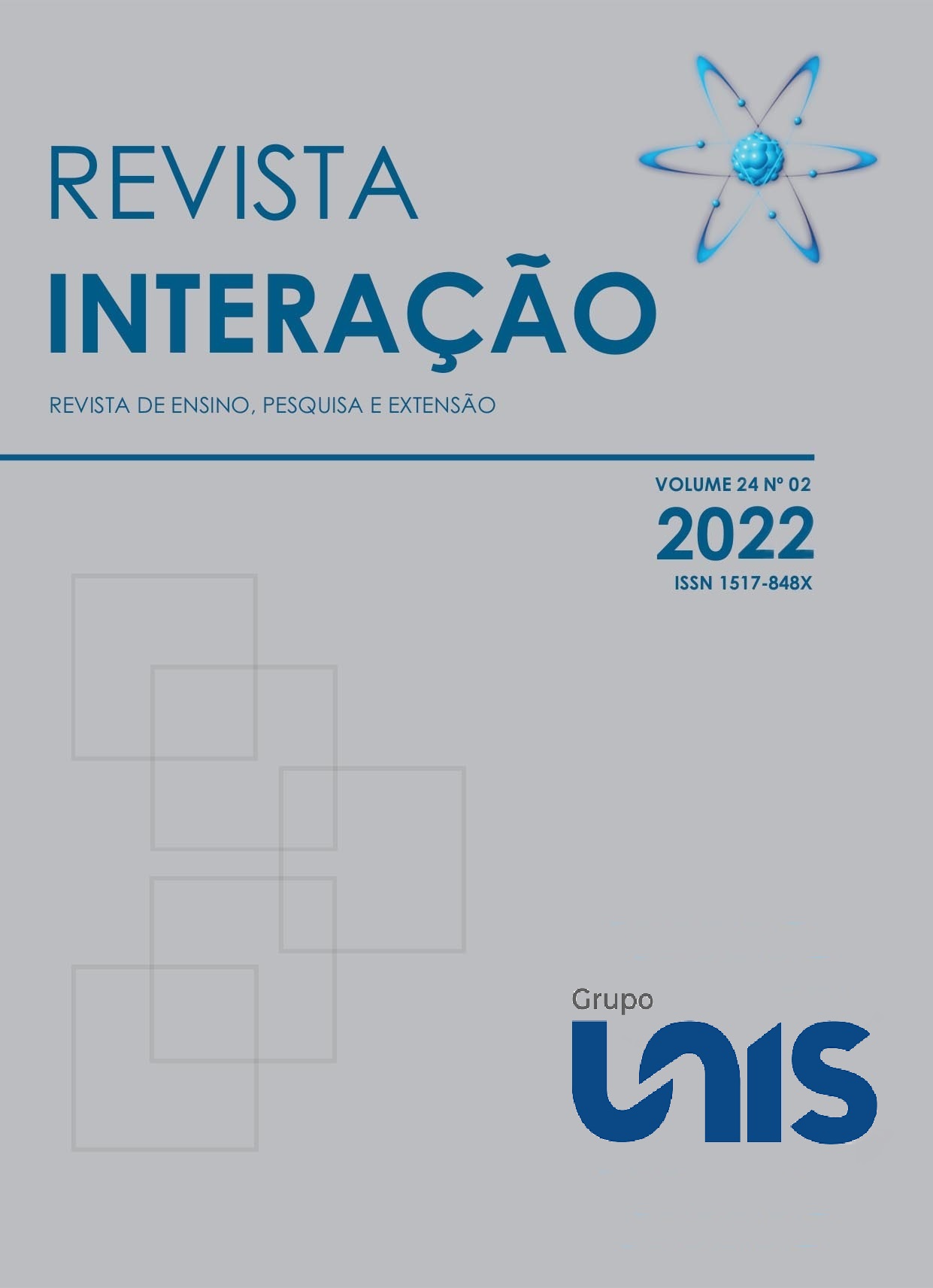USE MODIFICATION (RETROFIT) OF BUILDINGS
Structural impact
DOI:
https://doi.org/10.33836/interacao.v24i2.718Keywords:
Structural analysis, Use modification, Retrofit, Structural modellingAbstract
Readjustment/retrofit of the internal layout of buildings can be conducted to modify the use, modernization of buildings and / or to meet current regulatory requirements. When this occurs, it is important to conduct a structural analysis of the building to verify if this resistant capacity to support the loads of the new use, verifying if the new loads are compatible with an existing structure. Thus, the present work aims to evaluate the impacts of use modification in a fictitious building, considering the modification of residential use for use as a school. For this, two models were performed (one for each use) and comparisons were made through the percentage differences between the dimensioned reinforcement for the gate elements of the building. The necessary results that the change of use caused changes in the internal efforts required and, consequently, in the amount of steel needed for the slabs, beams and pillars of the building. The biggest changes in the amount of reinforcement were verified in the slabs and beams, which occurred in up to, respectively, 72.7% and 50.0%; these changes were not as important on the pillars, form tattoos increased by up to 25.0%. Thus, it is quantitatively observed the need to carry out a structural analysis of buildings when they are subjected to change in use due to new loads that may occur when their use is modified.
References
ABNT. NBR 6118 – Projeto de estruturas de concreto - Procedimento. Rio de Janeiro. 2014. 238 pág.
ABNT. NBR 6120 – Ações para o cálculo de estruturas de edificações. Rio de Janeiro. 2019. 61 pág.
ABNT. NBR 5626 – Sistemas prediais de água fria e água quente – Projeto, execução, operação e manutenção. Rio de Janeiro. 2020. 56 pág.
ADORNO, F. V.; DIAS, F. O.; SILVEIRA, J. C. O. Recuperação e reforço de vigas de concreto armado. Monografia. Escola de Engenharia Civil da Universidade Federal de Goiás. Goiânia. 2015.
CROITOR, E. P. N.; MELHADO, S. B. A. A gestão de projetos aplicada à reabilitação de edifícios: estudo da interface entre projeto e obra. Boletim Técnico da Escola Politécnica da USP. BT/PCC/529. São Paulo, 2009.
Dunhan-Jones E. Williamson, J. Retrofiting suburbia: urban design solutions for redesigning suburbs. Hoboken:John Willy &Sons, 2011.
HELENE, P. Vida Útil de 106 Anos! Muito bem vividos! 2007. Disponível em: <http://www.ibracon.org.br/news/index_vida.htm>. Acesso em: 23 de maio de 2021.
MARTINS, J. C. e CLARO, L. P. P. Retrofit urbano: alternativas para o enfrentamento dos problemas urbanos no contexto brasileiro. Em: Desenho Urbano. Editado por: PASQUOTTO, G. B. e GULINELLI, E. L. Editora ANAP. 2019. ISBN: 978-65-81469-00-9.
MIRANDA, D. et al. Retrofit da estrutura de concreto armado de um edifício em São Paulo com mais de 50 anos de idade. Anais. CONPAT 2015. Lisboa, 2015.
MORAES, V. T. F.; QUELHAS, O. L. G. O desenvolvimento da metodologia e os processos de um “retrofit” arquitetônico. Sistemas e Gestão – Revista Eletrônica. 2012, vol. 7, pp. 448-461.
SCUDERI, G. Retrofit of residential buildings in Europe. Designs. 2019. vol. 3, n. 8, 15 pág.
SOUZA, R. A. Concreto estrutural: análise e dimensionamento de elementos com descontinuidades. Tese. Escola Politécnica da Universidade de São Paulo. Universidade de São Paulo. São Paulo. 2004.
VALE, M. S. Diretrizes para racionalização e atualização das edificações: segundo conceito da qualidade e sobre a ótica do retrofit. Dissertação. Universidade Federal do Rio de Janeiro. Rio de Janeiro. 2006. 220 pág.



